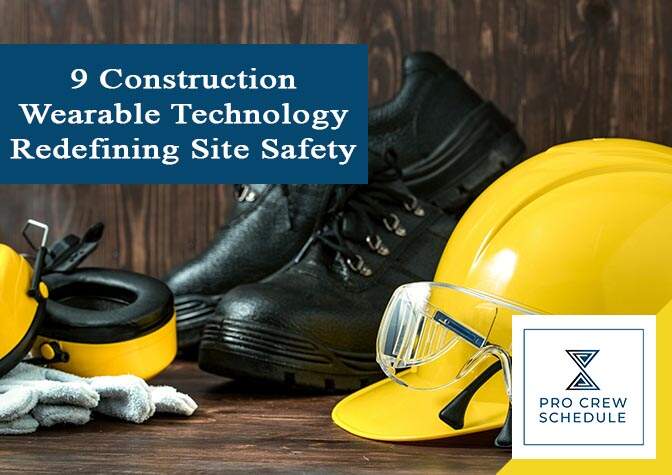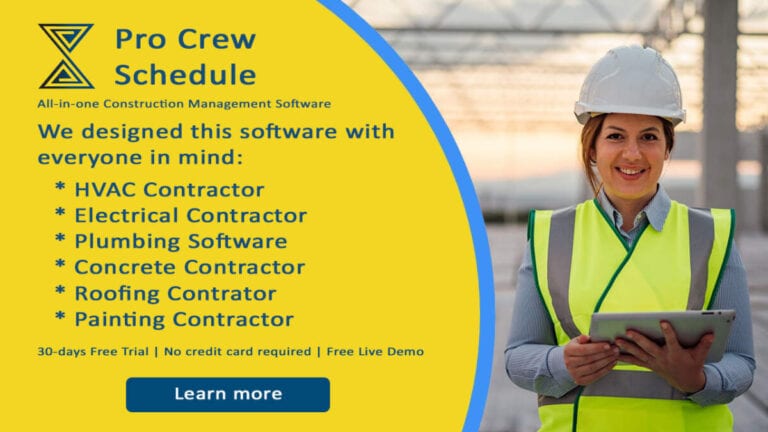In recent years, the construction industry has gone from being digitally inept to using robots to cut down work time and increase productivity. Managing construction projects has been made even easier with a wide variety of project management tools.
Developments in technology are gradually yet continuously answering one of the industry’s biggest concerns: safety. According to the Occupational Safety and Health Administration (OSHA), one in every ten construction workers is injured every year. Not only that, but the “Fatal Four” (falling, electrocution, being caught between objects, and being struck by an object) accounts for 58.6% of construction worker deaths.
Fortunately, wearable technology has proven to improve worker safety on project sites significantly. According to a 2017 survey by Dodge Data & Analytics, more than 80 respondents say that the use of wearable devices has had a “positive impact on safety” on construction sites.
How Wearables Benefit The Construction Industry
- It’s convenient
Construction work is very physically intense with a lot of lifting and moving around. So, the smart clothing they wear should not compromise dexterity. Fortunately, present-day wearable technology has improved from being bulky. Today, they are almost indistinguishable from regular work clothes, allowing convenience to work and move around.
Plenty of wearables are even built into protective clothing and equipment, like fluorescent vests and hard hats. Others are not built-in but are very easy to attach and detach to the workers’ clothes, like clip-on sensors. The convenience of this technology will aid in any project’s completion.
- It’s responsive
Most wearable devices can be connected to a wireless network connection. When this happens, the device can monitor its user in real-time and send out an alert if an unfortunate condition is detected.
This feature significantly improves rapid responses in times of urgency. Examples of emergencies wearable sensors can detect include a worker falling, unsafe environmental conditions, and an employee’s device stops transmitting. Data combined from multiple users can help identify dangerous areas.
- It’s continuous
Lastly, one of the significant benefits of wearable technology in construction is the continuous monitoring of data, such as worker health, safety, and location.
This is also connected to convenience. The device can provide complete data even without workers having to report manually. Also, minimal to no admin time is needed.
Wearable devices don’t only benefit individual users. With the organization-wide visibility of data reported to the same standard, the project manager for the construction project can make necessary plans and changes.
8 Construction Wearable Technology
1. Smart Head Gear
With the help of technological advancements, hard hats and helmets can do more than protect heads. Wearable helmets have cameras that can take pictures and record videos in 360 degrees to assist the user. On top of HD recording and photos, the smart helmet shows maps and blueprints to show the worker the area’s true conditions and provide hands-free data.
The Smart Cap is one of the many solutions available on the market. It uses brain waves to monitor fatigue to prevent micro-sleeps. When it detects that a worker is starting to drift, it sends noise and vibrations to alert the worker to stop what they are doing. This can prevent potential accidents and injuries from happening. Plus, supervisors can know when someone is sleepy to get them to a safer place.
2. Smartwatches
Smartwatches have been a popular piece of tech for a while. Although many have been using it to help with their regular daily activities, some products have powerful sensors that the construction industry can use.
The most basic of these technologies allow workers to communicate hands-free. But smartwatches offer health and safety benefits, as well. Among the vital signs, these watches can monitor include heart rate and step counts. Tracking these can prevent overexertion. More advanced versions can detect respiratory issues by recording an electrocardiogram to spot irregular heart rhythms and blood oxygen saturation.
3. Clip-ons
Clip-ons are not part of the usual construction PPE but prove very helpful and not obstructing, like the Spot-r by Triax Technologies. Ultimately, it improves response time by over 90%. It can identify zone-based worker locations and detect free falls. With a direct line of communication, workers can immediately report injuries, hazards, and safety incidents by just pushing a button. In the event of an emergency, the Spot-r will sound an alarm for evacuation. Lastly, attendance and monitoring are made easier with automated check-ins and check-outs.
4. AR Glasses
In our article, “The Future Of The Construction Industry With Augmented Reality (AR),” we talk about the future of construction with AR and briefly discuss its safety implications. While there are challenges AR poses to safety, the benefits outway those.
Simple safety glasses protect workers, but smart glasses provide information, as well. By combining computer-generated imagery with the physical environment, AR protects the user’s eyes and presents vital information about the structure and safety.
With falling the leading cause of injury and death on construction sites, being aware of dangerous leading ages is crucial to improving site safety. As workers move around the site, they can get real-time information about leading edges’ locations, thus avoiding them.
AR and smart glasses can also present safety instructions and protocols directly in the worker’s environment. For example, a worker operating heavy machinery can get instruction on operating the machine and the specifics of their task. This kind of technology can also be used in safety training.
4. Geo-tagged safety vests
Global positioning systems, or GPS, have been applied and proven essential to several industries, like transportation and law enforcement. But with the innovation of geo-tagged vests, it’s now used in construction.
The sensors on the vests can alert workers when they are nearing or entering a hazardous area. These vests can even be used together with GPS-equipped equipment. They can detect heavy equipment and slow them down to avoid safety issues.
When used correctly, geo-tagged vests can identify areas where the activity is slowed down due to site conditions, resource restrictions, and safety hazards. The data received can be used to plan for improvements.
5. Cooling vests
Safety standards are not only based on the hazards and safety issues the project site has– the workers’ comfort is also a factor. On hot days, the heat may be a cause of discomfort and distraction among the crew, leading to accidents. The workers are even at the risk of suffering heat-related injuries.
Cooling vests allow construction workers to stay cool and comfortable even in hot and humid environments. These battery-powered vests can blow up to 5 gallons of air per second and are OSHA-compliant.
6. Better heated jackets
Contrarily, cold conditions are also a danger to construction workers. On top of a higher risk of slipping and falling due to ice, workers may also suffer from cold-related health conditions, like frostbite and hypothermia.
Heated jackets aren’t a new construction wearable, but their technology has significantly improved. They now have battery packs that can heat for at least eight hours. They are even lighter now, with most jackets weighing at most two pounds.
Companies like DeWalt and Milwaukee are even making them reflective, a plus for construction safety. More than that, companies like Ravean are using rechargeable Lithium-ion batteries, making them more powerful and reducing the number of batteries the jacket requires.
7. Exoskeletons
Exoskeletons, also known as “wearable robotics,” are among the latest wearable technologies to hit the market but show a lot of promise.
Because of the industry’s physically intense nature, construction workers struggle and suffer from body stress and strain, like back and muscle pains. Exoskeletons offer skeletal and muscular support, especially when workers lift and carry heavy objects. It can help them perform better and decrease the risk of injury, allowing them to be more efficient longer.
8. Powered Boots
Already an essential part of construction PPE, worker boots will soon upgrade and become a great piece of wearable technology. SolePower’s goal is to revolutionize construction footwear with their Smart Boots.
This type of boots will have pressure sensors that can detect small shocks or even falls by workers, automatically calling for help. It will even have location technology that can accurately track workers, improving lone worker safety. Lastly, there will be a charging system in the heel that charges the boots while walking. This increases the chances of the boots staying charged during the worker’s shift.
Privacy: A Challenge Wearable Technology Poses To Construction
While wearable technology offers a plethora of benefits, it still poses some issues.
One is privacy. With new technology solutions, some workers are concerned that their privacy may be breached. This challenge can be remedied by informing the workers of the many safety benefits this technology offers, although not everyone will understand it right away. Moreover, with devices the Spot-r, it’s not GPS-based and disconnects from the network once the worker is offsite. They don’t need to be worried about offsite monitoring.
If you are a contractor looking for effective subcontractor scheduling software, use Pro Crew Schedule’s Software. Sign up today and get a free 30-day trial with all its features and no strings attached. Request a demo here.
Check out more articles about construction technology here.







